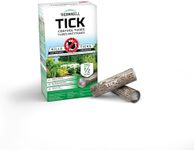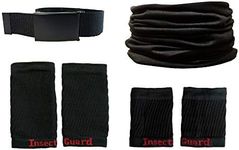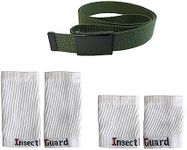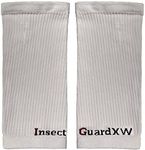Buying Guide for the Best Tick Repellents
Choosing the right tick repellent is important for protecting yourself and your family from tick bites, which can carry diseases. The best product for you depends on where you’ll be using it, how long you’ll be outdoors, and your personal preferences regarding application and ingredients. Understanding the key features of tick repellents will help you make a safe and effective choice.Active IngredientThe active ingredient is the main chemical or natural substance that repels ticks. Common options include DEET, picaridin, permethrin, and oil of lemon eucalyptus. This is important because different ingredients offer varying levels of protection and safety for adults, children, and pets. DEET and picaridin are widely used and effective, while permethrin is meant for treating clothing, not skin. Natural options like oil of lemon eucalyptus are preferred by those seeking plant-based solutions. To choose the right one, consider your sensitivity to chemicals, the age of users, and whether you need to treat skin or clothing.
Duration of ProtectionDuration of protection tells you how long the repellent will keep ticks away after application. This is important because longer-lasting repellents reduce the need for frequent reapplication, which is useful for extended outdoor activities. Products can offer protection ranging from a couple of hours to over eight hours. If you plan to be outside for a short walk, a shorter duration may be fine, but for hiking or camping, look for a repellent with longer-lasting effects.
Application MethodApplication method refers to how the repellent is applied, such as sprays, lotions, wipes, or treated clothing. This matters because some people prefer the convenience of sprays, while others like the control of lotions or the portability of wipes. Treated clothing is a good option for those who want hands-free, long-term protection. Think about your comfort with each method and the situation in which you’ll use the repellent to decide which is best for you.
Water and Sweat ResistanceWater and sweat resistance indicates how well the repellent stays effective when you’re sweating or exposed to water. This is important for outdoor activities like hiking, sports, or swimming. Some repellents are designed to withstand moisture, while others may need to be reapplied after getting wet. If you expect to be active or in humid conditions, choose a product labeled as water- or sweat-resistant.
Safety and SuitabilitySafety and suitability cover whether the repellent is appropriate for children, pregnant women, or people with sensitive skin. This is crucial because some ingredients are not recommended for young children or certain individuals. Always check the label for age recommendations and warnings. If you have sensitive skin or allergies, look for hypoallergenic or fragrance-free options. Your personal health needs and who will be using the product should guide your choice.
Scent and FeelScent and feel refer to how the repellent smells and how it feels on your skin. Some repellents have strong odors or can feel greasy or sticky, which may be unpleasant for some users. If you are sensitive to smells or dislike certain textures, look for products labeled as unscented or non-greasy. Your comfort with the product’s scent and feel can make a big difference in how likely you are to use it regularly.











![Canadian Shield Insect Repellent| Tick Repellent Aerosol Formulated With 30% Deet For 8 Hours of Outdoor Protection (170g)[12 Pack]](https://images-proxy.bestreviews.guide/D0Ki5FNSCt-XxJq6Cv1V-6JDFYY=/0x150/https://m.media-amazon.com/images/I/51KF3N5VZNL._AC_CX679_.jpg)




